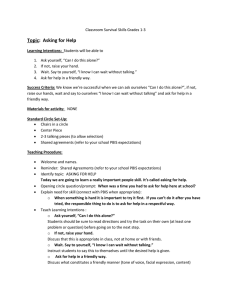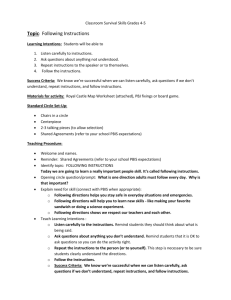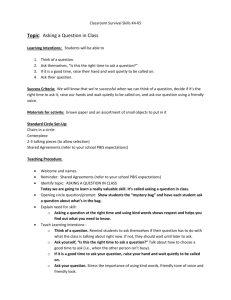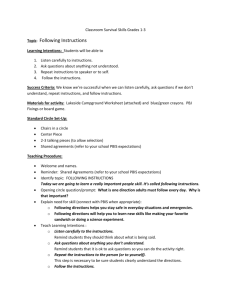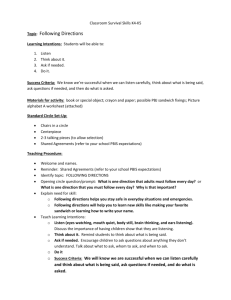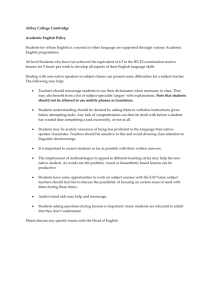Asking for Help - Milwaukee Public Schools
advertisement
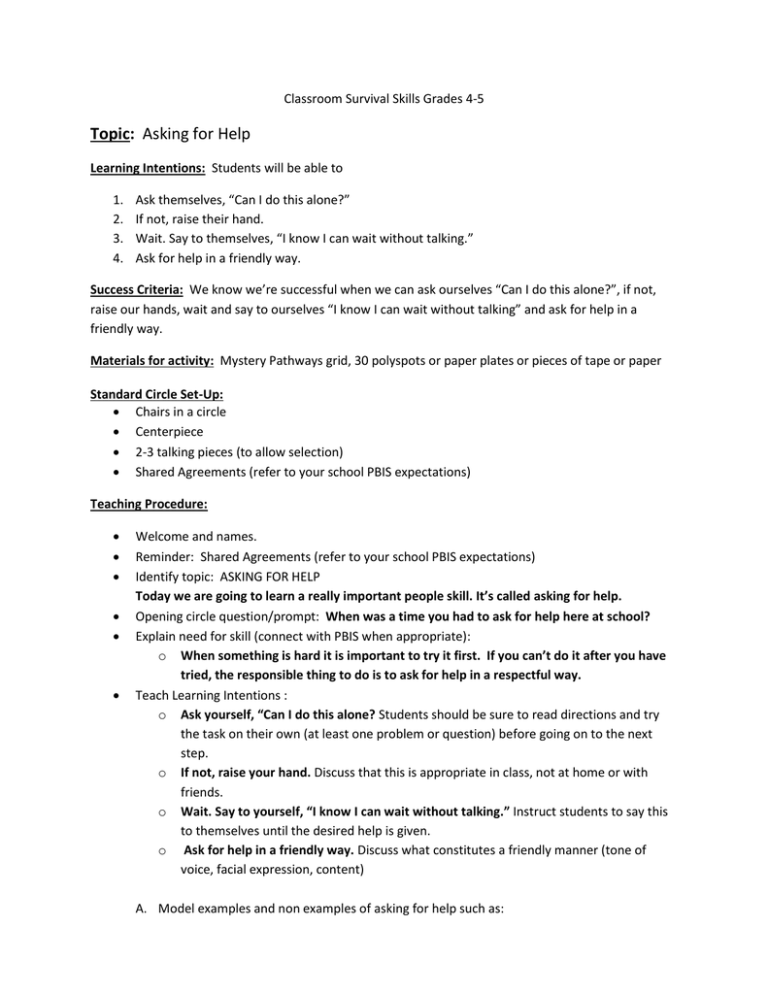
Classroom Survival Skills Grades 4-5 Topic: Asking for Help Learning Intentions: Students will be able to 1. 2. 3. 4. Ask themselves, “Can I do this alone?” If not, raise their hand. Wait. Say to themselves, “I know I can wait without talking.” Ask for help in a friendly way. Success Criteria: We know we’re successful when we can ask ourselves “Can I do this alone?”, if not, raise our hands, wait and say to ourselves “I know I can wait without talking” and ask for help in a friendly way. Materials for activity: Mystery Pathways grid, 30 polyspots or paper plates or pieces of tape or paper Standard Circle Set-Up: Chairs in a circle Centerpiece 2-3 talking pieces (to allow selection) Shared Agreements (refer to your school PBIS expectations) Teaching Procedure: Welcome and names. Reminder: Shared Agreements (refer to your school PBIS expectations) Identify topic: ASKING FOR HELP Today we are going to learn a really important people skill. It’s called asking for help. Opening circle question/prompt: When was a time you had to ask for help here at school? Explain need for skill (connect with PBIS when appropriate): o When something is hard it is important to try it first. If you can’t do it after you have tried, the responsible thing to do is to ask for help in a respectful way. Teach Learning Intentions : o Ask yourself, “Can I do this alone? Students should be sure to read directions and try the task on their own (at least one problem or question) before going on to the next step. o If not, raise your hand. Discuss that this is appropriate in class, not at home or with friends. o Wait. Say to yourself, “I know I can wait without talking.” Instruct students to say this to themselves until the desired help is given. o Ask for help in a friendly way. Discuss what constitutes a friendly manner (tone of voice, facial expression, content) A. Model examples and non examples of asking for help such as: a. Pretend to work on an assignment Think aloud: This is really hard. But the responsible thing to do is to try it. Okay, I understand this one but I may need help with the second. b. Ask students: Is it time to ask for help? How can you tell? c. Pretend to work on an assignment This time think aloud: This is too hard, I can’t do this, someone needs to help me). d. Ask students: Is it time to ask for help? How can you tell? B. Provide students with examples and non examples of asking for help such as: a. A student in class hears the directions for a project and says, “I can’t do that. I need help.” b. You have a math problem that you are working on in class and it is really hard. You try your best to start it, but get stuck. You ask for help. c. Your classroom teacher asks you to carry a heavy box to the office. You try to pick it up but realize you can’t carry it alone. You ask for help. C. Practice/Role Play 3x: Have each student describe a situation in which they might want to use this skill. Role play these situations - or use the examples above. (For a detailed model of how to use role play and give feedback, see Skillstreaming.) Activity to Practice Skill: Mystery Pathways (Ropes & Challenges Education Curriculum Guide) See Lesson 2 Resource for instructions and grids. Closing Circle Questions: Who are some people you could ask when you need help? When is a time this week that you might need to ask for help?
